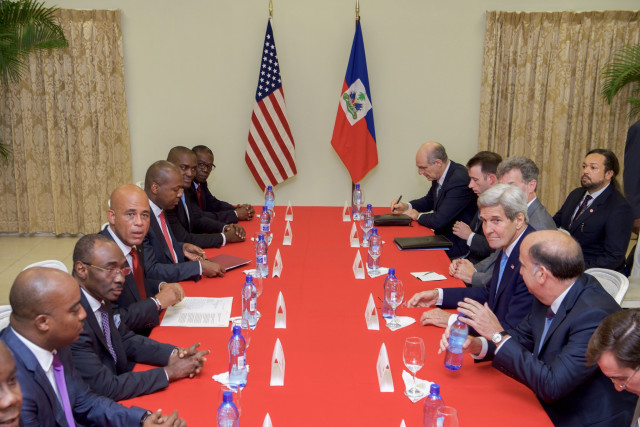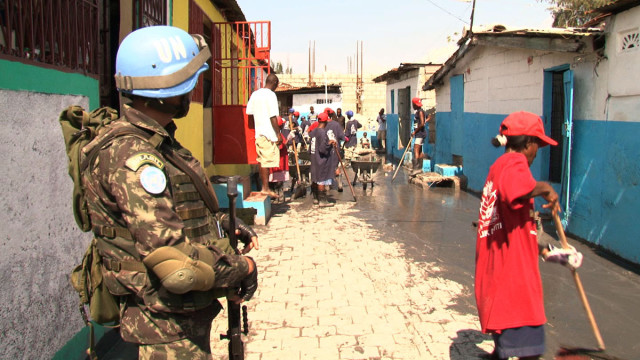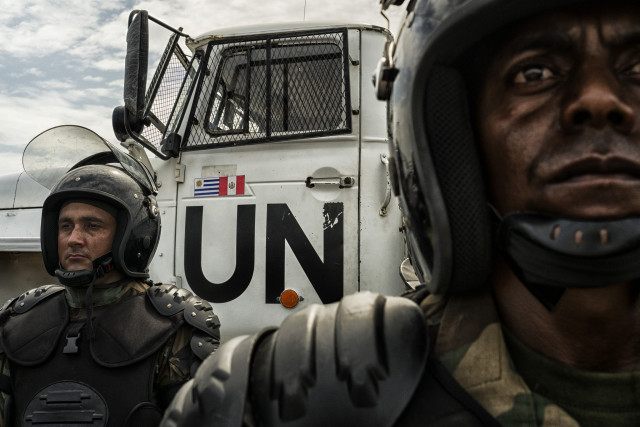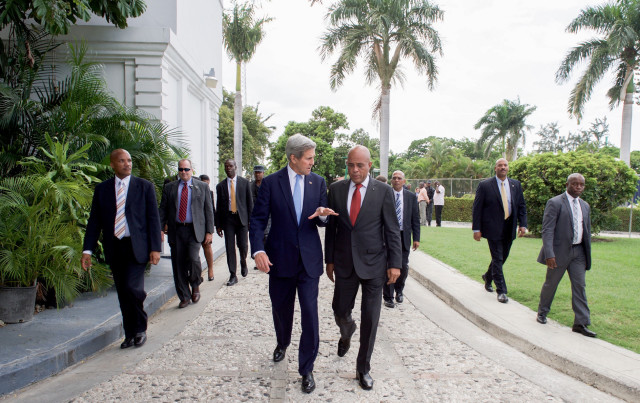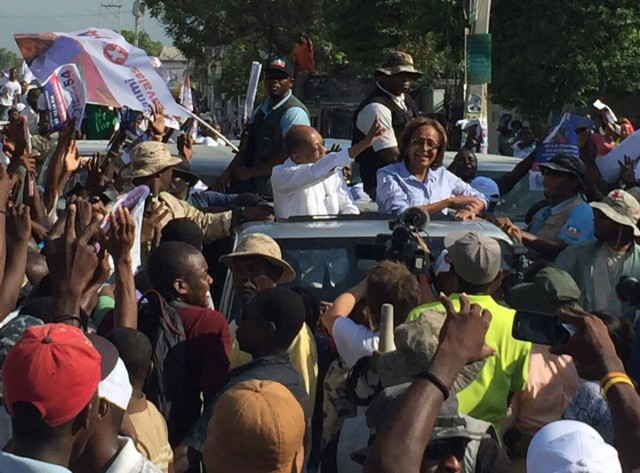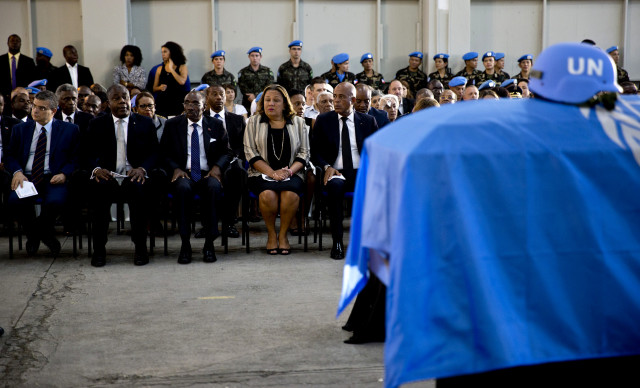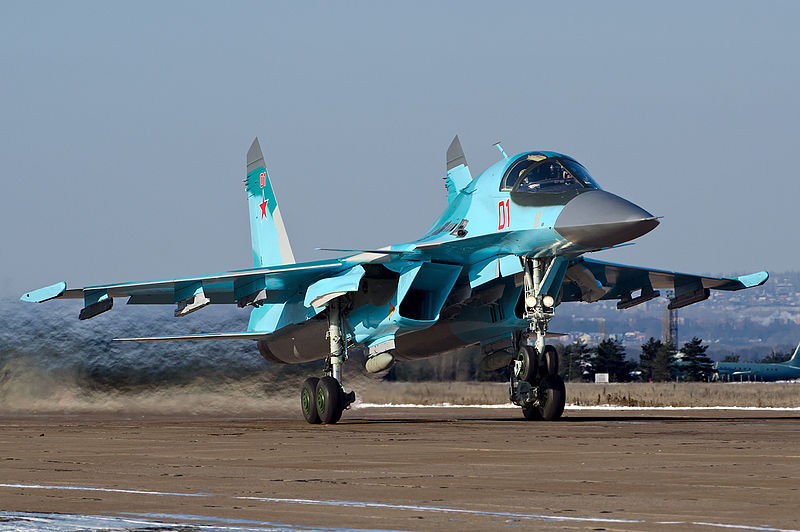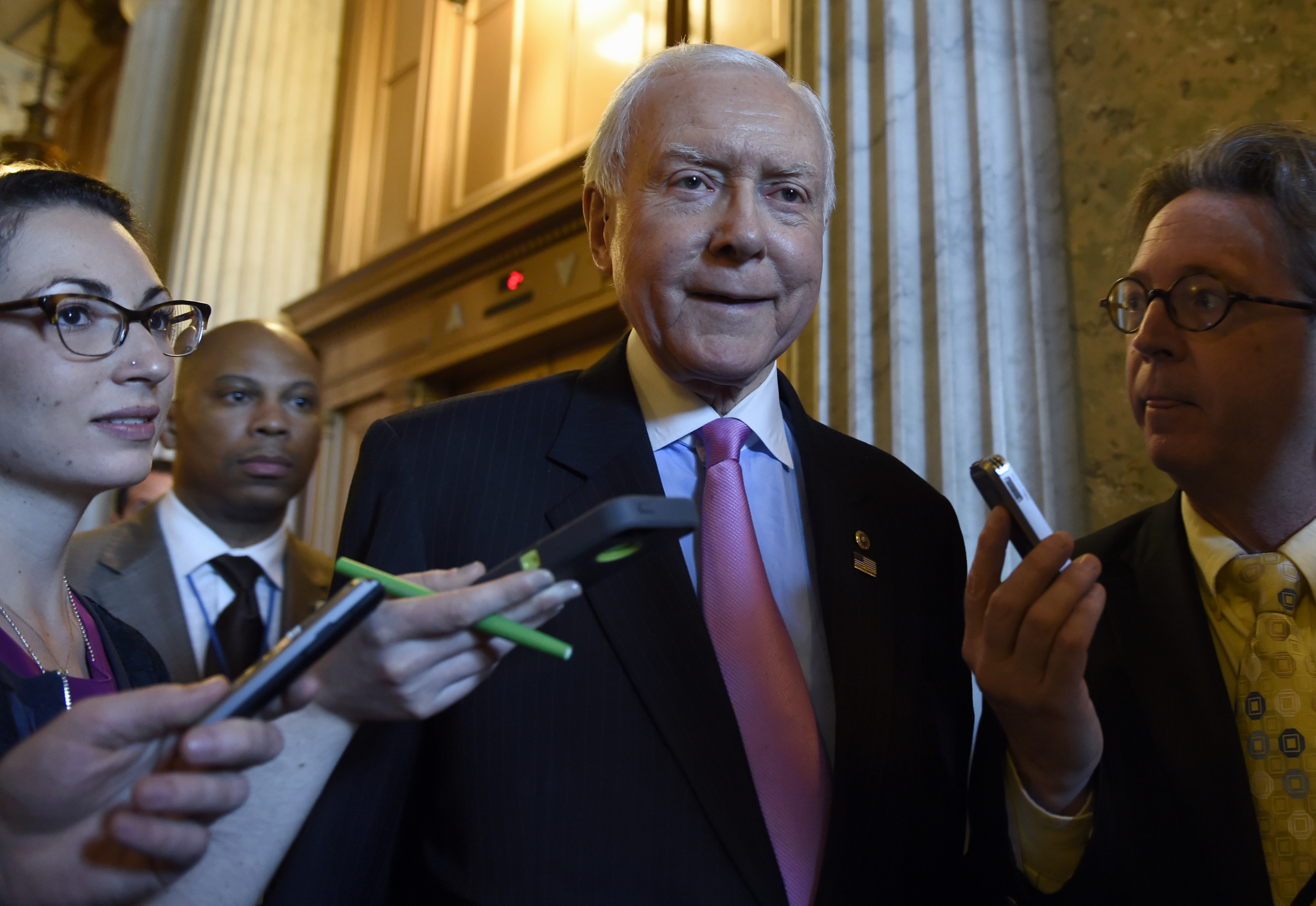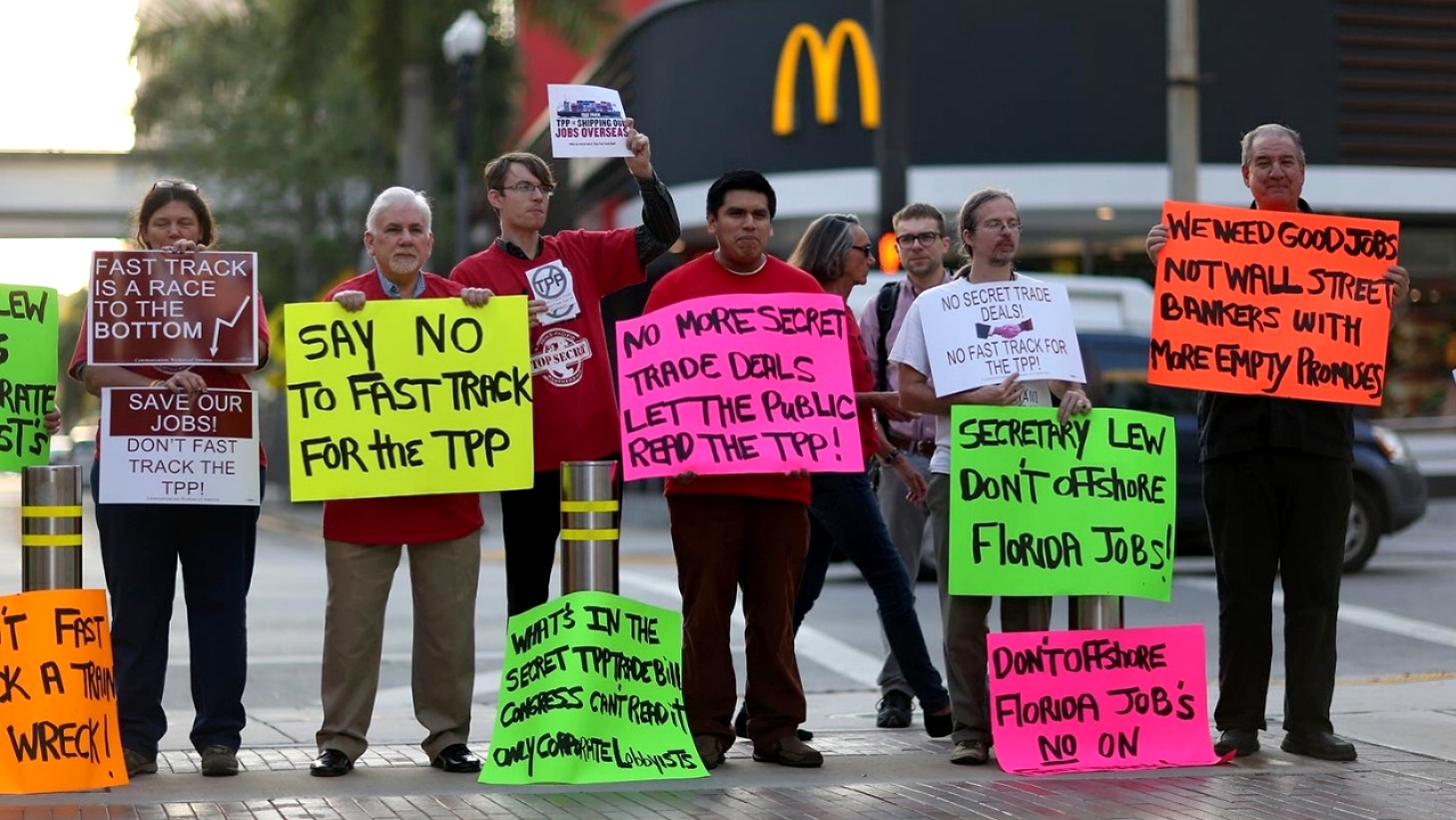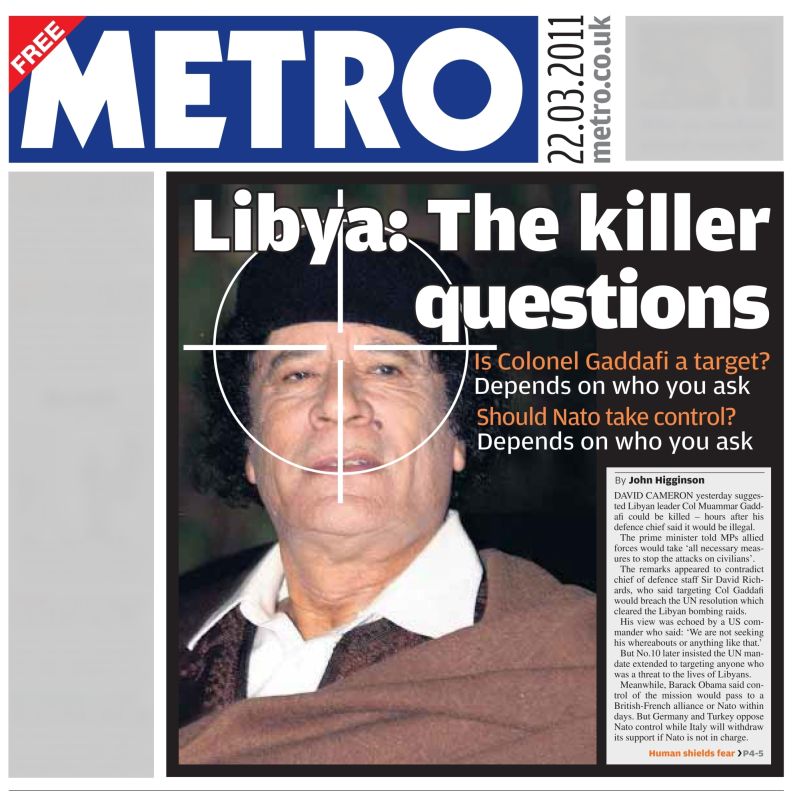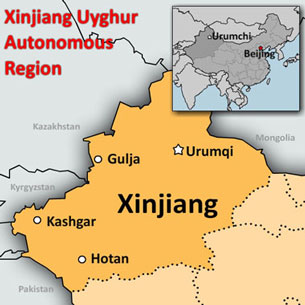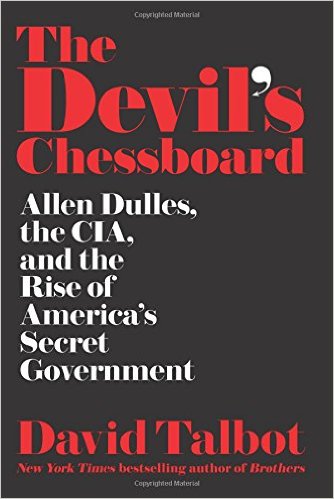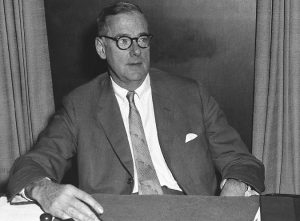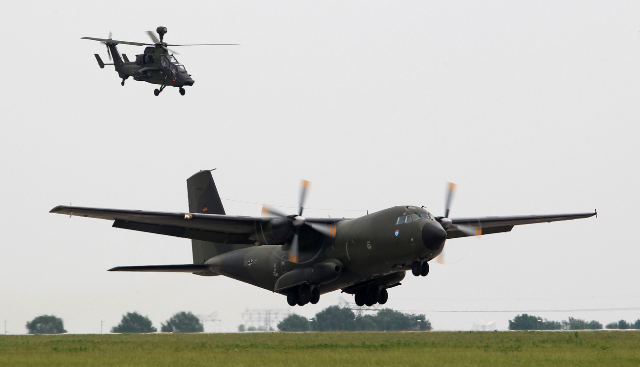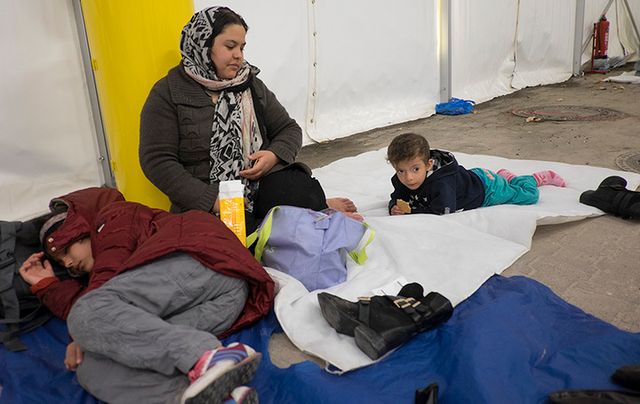This topic of this year’s Valdai conference is Societies Between War and Peace: Overcoming the Logic of Conflict in Tomorrow’s World. In the period between October 19 and 22, experts from 30 countries have been considering various aspects of the perception of war and peace both in the public consciousness and in international relations, religion and economic interaction between states.
* * *
President of Russia Vladimir Putin:
Colleagues, ladies and gentlemen,
Allow me to greet you here at this regular meeting of the Valdai International Club.
It is true that for over 10 years now this has been a platform to discuss the most pressing issues and consider the directions and prospects for the development of Russia and the whole world. The participants change, of course, but overall, this discussion platform retains its core, so to speak – we have turned into a kind of mutually understanding environment.
We have an open discussion here; this is an open intellectual platform for an exchange of views, assessments and forecasts that are very important for us here in Russia. I would like to thank all the Russian and foreign politicians, experts, public figures and journalists taking part in the work of this club.
This year the discussion focusses on issues of war and peace. This topic has clearly been the concern of humanity throughout its history. Back in ancient times, in antiquity people argued about the nature, the causes of conflicts, about the fair and unfair use of force, of whether wars would always accompany the development of civilisation, broken only by ceasefires, or would the time come when arguments and conflicts are resolved without war.
I’m sure you recalled our great writer Leo Tolstoy here. In his great novel War and Peace, he wrote that war contradicted human reason and human nature, while peace in his opinion was good for people.
True, peace, a peaceful life have always been humanity’s ideal. State figures, philosophers and lawyers have often come up with models for a peaceful interaction between nations. Various coalitions and alliances declared that their goal was to ensure strong, ‘lasting’ peace as they used to say. However, the problem was that they often turned to war as a way to resolve the accumulated contradictions, while war itself served as a means for establishing new post-war hierarchies in the world.
Meanwhile peace, as a state of world politics, has never been stable and did not come of itself. Periods of peace in both European and world history were always been based on securing and maintaining the existing balance of forces. This happened in the 17thcentury in the times of the so-called Peace of Westphalia, which put an end to the Thirty Years’ War. Then in the 19th century, in the time of the Vienna Congress; and again 70 years ago in Yalta, when the victors over Nazism made the decision to set up the United Nations Organisation and lay down the principles of relations between states.
With the appearance of nuclear weapons, it became clear that there could be no winner in a global conflict. There can be only one end – guaranteed mutual destruction. It so happened that in its attempt to create ever more destructive weapons humanity has made any big war pointless.
Incidentally, the world leaders of the 1950s, 1960s, 1970s and even 1980s did treat the use of armed force as an exceptional measure. In this sense, they behaved responsibly, weighing all the circumstances and possible consequences.
The end of the Cold War put an end to ideological opposition, but the basis for arguments and geopolitical conflicts remained. All states have always had and will continue to have their own diverse interests, while the course of world history has always been accompanied by competition between nations and their alliances. In my view, this is absolutely natural.
The main thing is to ensure that this competition develops within the framework of fixed political, legal and moral norms and rules. Otherwise, competition and conflicts of interest may lead to acute crises and dramatic outbursts.
We have seen this happen many times in the past. Today, unfortunately, we have again come across similar situations. Attempts to promote a model of unilateral domination, as I have said on numerous occasions, have led to an imbalance in the system of international law and global regulation, which means there is a threat, and political, economic or military competition may get out of control.
What, for instance, could such uncontrolled competition mean for international security? A growing number of regional conflicts, especially in ‘border’ areas, where the interests of major nations or blocs meet. This can also lead to the probable downfall of the system of non-proliferation of weapons of mass destruction (which I also consider to be very dangerous), which, in turn, would result in a new spiral of the arms race.
We have already seen the appearance of the concept of the so-called disarming first strike, including one with the use of high-precision long-range non-nuclear weapons comparable in their effect to nuclear weapons.
The use of the threat of a nuclear missile attack from Iran as an excuse, as we know, has destroyed the fundamental basis of modern international security – the Anti-Ballistic Missile Treaty. The United States has unilaterally seceded from the treaty. Incidentally, today we have resolved the Iranian issue and there is no threat from Iran and never has been, just as we said.
The thing that seemed to have led our American partners to build an anti-missile defence system is gone. It would be reasonable to expect work to develop the US anti-missile defence system to come to an end as well. What is actually happening? Nothing of the kind, or actually the opposite – everything continues.
Recently the United States conducted the first test of the anti-missile defence system in Europe. What does this mean? It means we were right when we argued with our American partners. They were simply trying yet again to mislead us and the whole world. To put it plainly, they were lying. It was not about the hypothetical Iranian threat, which never existed. It was about an attempt to destroy the strategic balance, to change the balance of forces in their favour not only to dominate, but to have the opportunity to dictate their will to all: to their geopolitical competition and, I believe, to their allies as well. This is a very dangerous scenario, harmful to all, including, in my opinion, to the United States.
The nuclear deterrent lost its value. Some probably even had the illusion that victory of one party in a world conflict was again possible – without irreversible, unacceptable, as experts say, consequences for the winner, if there ever is one.
In the past 25 years, the threshold for the use of force has gone down noticeably. The anti-war immunity we have acquired after two world wars, which we had on a subconscious, psychological level, has become weaker. The very perception of war has changed: for TV viewers it was becoming and has now become an entertaining media picture, as if nobody dies in combat, as if people do not suffer and cities and entire states are not destroyed.
Unfortunately, military terminology is becoming part of everyday life. Thus, trade and sanctions wars have become today’s global economic reality – this has become a set phrase used by the media. The sanctions, meanwhile, are often used also as an instrument of unfair competition to put pressure on or completely ‘throw’ competition out of the market. As an example, I could take the outright epidemic of fines imposed on companies, including European ones, by the United States. Flimsy pretexts are being used, and all those who dare violate the unilateral American sanctions are severely punished.
You know, this may not be Russia’s business, but this is a discussion club, therefore I will ask: Is that the way one treats allies? No, this is how one treats vassals who dare act as they wish – they are punished for misbehaving.
Last year a fine was imposed on a French bank to a total of almost $9 billion – $8.9 billion, I believe. Toyota paid $1.2 billion, while the German Commerzbank signed an agreement to pay $1.7 billion into the American budget, and so forth.
We also see the development of the process to create non-transparent economic blocs, which is done following practically all the rules of conspiracy. The goal is obvious – to reformat the world economy in a way that would make it possible to extract a greater profit from domination and the spread of economic, trade and technological regulation standards.
The creation of economic blocs by imposing their terms on the strongest players would clearly not make the world safer, but would only create time bombs, conditions for future conflicts.
The World Trade Organisation was once set up. True, the discussion there is not proceeding smoothly, and the Doha round of talks ended in a deadlock, possibly, but we should continue looking for ways out and for compromise, because only compromise can lead to the creation of a long-term system of relations in any sphere, including the economy. Meanwhile, if we dismiss that the concerns of certain countries – participants in economic communication, if we pretend that they can be bypassed, the contradictions will not go away, they will not be resolved, they will remain, which means that one day they will make themselves known.
As you know, our approach is different. While creating the Eurasian Economic Union we tried to develop relations with our partners, including relations within the Chinese Silk Road Economic Belt initiative. We are actively working on the basis of equality in BRICS, APEC and the G20.
The global information space is also shaken by wars today, in a manner of speaking. The ‘only correct’ viewpoint and interpretation of events is aggressively imposed on people, certain facts are either concealed or manipulated. We are all used to labelling and the creation of an enemy image.
The authorities in countries that seemed to have always appealed to such values as freedom of speech and the free dissemination of information – something we have heard about so often in the past – are now trying to prevent the spreading of objective information and any opinion that differs from their own; they declare it hostile propaganda that needs to be combatted, clearly using undemocratic means.
Unfortunately, we hear the words war and conflict ever more frequently when talking about relations between people of different cultures, religions and ethnicity. Today hundreds of thousands of migrants are trying to integrate into a different society without a profession and without any knowledge of the language, traditions and culture of the countries they are moving to. Meanwhile, the residents of those countries – and we should openly speak about this, without trying to polish things up – the residents are irritated by the dominance of strangers, rising crime rate, money spent on refugees from the budgets of their countries.
Many people sympathise with the refugees, of course, and would like to help them. The question is how to do it without infringing on the interests of the residents of the countries where the refugees are moving. Meanwhile, a massive uncontrolled shocking clash of different lifestyles can lead, and already is leading to growing nationalism and intolerance, to the emergence of a permanent conflict in society.
Colleagues, we must be realistic: military power is, of course, and will remain for a long time still an instrument of international politics. Good or bad, this is a fact of life. The question is, will it be used only when all other means have been exhausted? When we have to resist common threats, like, for instance, terrorism, and will it be used in compliance with the known rules laid down in international law. Or will we use force on any pretext, even just to remind the world who is boss here, without giving a thought about the legitimacy of the use of force and its consequences, without solving problems, but only multiplying them.
We see what is happening in the Middle East. For decades, maybe even centuries, inter-ethnic, religious and political conflicts and acute social issues have been accumulating here. In a word, a storm was brewing there, while attempts to forcefully rearrange the region became the match that lead to a real blast, to the destruction of statehood, an outbreak of terrorism and, finally, to growing global risks.
A terrorist organisation, the so-called Islamic State, took huge territories under control. Just think about it: if they occupied Damascus or Baghdad, the terrorist gangs could achieve the status of a practically official power, they would create a stronghold for global expansion. Is anyone considering this? It is time the entire international community realised what we are dealing with – it is, in fact, an enemy of civilisation and world culture that is bringing with it an ideology of hatred and barbarity, trampling upon morals and world religious values, including those of Islam, thereby compromising it.
We do not need wordplay here; we should not break down the terrorists into moderate and immoderate ones. It would be good to know the difference. Probably, in the opinion of certain experts, it is that the so-called moderate militants behead people in limited numbers or in some delicate fashion.
In actual fact, we now see a real mix of terrorist groups. True, at times militants from the Islamic State, Jabhat al-Nusra and other Al-Qaeda heirs and splinters fight each other, but they fight for money, for feeding grounds, this is what they are fighting for. They are not fighting for ideological reasons, while their essence and methods remain the same: terror, murder, turning people into a timid, frightened, obedient mass.
In the past years the situation has been deteriorating, the terrorists’ infrastructure has been growing, along with their numbers, while the weapons provided to the so-called moderate opposition eventually ended up in the hands of terrorist organisations. Moreover, sometimes entire bands would go over to their side, marching in with flying colours, as they say.
Why is it that the efforts of, say, our American partners and their allies in their struggle against the Islamic State has not produced any tangible results? Obviously, this is not about any lack of military equipment or potential. Clearly, the United States has a huge potential, the biggest military potential in the world, only double crossing is never easy. You declare war on terrorists and simultaneously try to use some of them to arrange the figures on the Middle East board in your own interests, as you may think.
It is impossible to combat terrorism in general if some terrorists are used as a battering ram to overthrow the regimes that are not to one’s liking. You cannot get rid of those terrorists, it is only an illusion to think you can get rid of them later, take power away from them or reach some agreement with them. The situation in Libya is the best example here.
Let us hope that the new government will manage to stabilise the situation, though this is not a fact yet. However, we need to assist in this stabilisation.
We understand quite well that the militants fighting in the Middle East represent a threat to everyone, including Russia. People in our nation know what terrorist aggression means and know what the bandits in the North Caucasus have done. We remember the bloody terrorist attacks in Budennovsk, Moscow, Beslan, Volgograd and other Russian cities. Russia has always fought terrorism in all its forms, consistently advocating for truly unifying the global community’s efforts to fight this evil. That is why we made our suggestion to create a broad anti-terror coalition, which I recently voiced in my speech at the United Nations.
After Syria’s official authorities reached out to us for support, we made the decision to launch a Russian military operation in that nation. I will stress again: it is fully legitimate and its only goal is to help restore peace. I am sure that the Russian service members’ actions will have the necessary positive effect on the situation, helping Syria’s official authorities create the conditions for subsequent actions in reaching a political settlement and stage pre-emptive strikes against terrorists that threaten our nation, Russia. Thus, we help all nations and peoples who are certainly in danger if these terrorists return home.
Here is what we believe we must do to support long-term settlement in the region, as well as its social, economic and political revival. First of all, free Syria and Iraq’s territories from terrorists and not let them move their activities to other regions. And to do that, we must join all forces – the Iraqi and Syrian regular armies, Kurdish militia, various opposition groups that have actually made a real contribution to fighting terrorists – and coordinate the actions of countries within and outside of the region against terrorism. At the same time, joint anti-terrorist action must certainly be based on international law.
Second, it is obvious that a military victory over the militants alone will not resolve all problems, but it will create conditions for the main thing: a beginning of a political process with participation by all healthy, patriotic forces of the Syrian society. It is the Syrians who must decide their fate with exclusively civil, respectful assistance from the international community, and not under external pressure through ultimatums, blackmail or threats.
The collapse of Syria’s official authorities, for example, will only mobilise terrorists. Right now, instead of undermining them, we must revive them, strengthening state institutions in the conflict zone.
I want to remind you that throughout its history, the Middle East has often been an arena for clashes between various empires and powers. They redrew boundaries and reshaped the region’s political structure to suit their tastes and interests. And the consequences were not always good or beneficial for the people living there. Actually, no one even asked their opinion. The last people to find out what was happening in their own nations were the people living in the Middle East.
Of course, this begs the question: isn’t it time for the international community to coordinate all its actions with the people who live in these territories? I think that it’s long overdue; these people – like any people – should be treated with respect.
The involvement in the process of political settlement of the Muslim clergy, leaders of Islam and heads of Muslim nations is crucial. We count on their consolidated position and assistance, as well as their moral authority. It is very important to protect people, especially youth, against the destructive effects of the ideology of the terrorists, who are trying to use them as cannon fodder, nothing more. We need to distinguish clearly between genuine Islam, whose values are peace, family, good deeds, helping others, respecting traditions, and the lies and hatred that the militants sow under the guise of Islam.
Fourth, we currently need to develop a roadmap for the region’s economic and social development, to restore basic infrastructure, housing, hospitals and schools. Only this kind of on-site creative work after eliminating terrorism and reaching a political settlement can stop the enormous flow of refugees to European nations and return those who left to their homelands.
It is clear that Syria will need massive financial, economic and humanitarian assistance in order to heal the wounds of war. We need to determine the format within which we could do this work, getting donor nations and international financial institutions involved. Right now, Syria’s problems are being discussed at the UN and other international organisations, and within the framework of interstate relations. It’s true that for now, we are not always able to reach an understanding and it is painfully difficult to abandon might-have-been expectations and unjustified calculations, but nevertheless, there is some progress.
We see that contacts are being gradually established between military departments within the anti-terrorist operation framework, although not as actively and quickly as we might like. Approval of the Russian-American document on safety guidelines for the two countries’ military aircraft flying missions over Syria is a serious step in the right direction.
We are also close to starting an exchange of information with our western colleagues on militants’ positions and movements. All these are certainly steps in the right direction. What’s most important is to treat one another as allies in a common fight, to be honest and open. Only then can we guarantee victory over the terrorists.
For all the drama of its current situation, Syria can become a model for partnership in the name of common interests, resolving problems that affect everyone, and developing an effective risk management system. We already had this opportunity after the end of the Cold War. Unfortunately, we did not take advantage of it. We also had the opportunity in the early 2000s, when Russia, the US and many other nations were faced with terrorist aggression and unfortunately, we were unable to establish a good dynamic for cooperating then, either. I will not return to that and the reasons for why we were unable to do this. I think everyone knows already. Now, what’s important is to draw the right lessons from what happened in the past and to move forward.
I am confident that the experience we acquired and today’s situation will allow us to finally make the right choice – the choice in favour of cooperation, mutual respect and trust, the choice in favour of peace.
Thank you very much for your attention. (Applause.)
<…>
Vladimir Putin: First of all, let me thank everyone who spoke. I think this was all very substantive and interesting, and I am very pleased to see that our discussion has spice and substance to it rather than being all dry talk.
Let’s not dig around now in the distant past. When it comes to who is to blame for the Soviet Union’s collapse, I think that internal reasons were the primary cause, of course, and in this sense, Mr Ambassador was right. The inefficiency of the former Soviet Union’s political and economic systems was the main cause of the state’s collapse.
But who gave this process a helping hand is another matter. I don’t think that our geopolitical adversaries were standing around idle, but internal reasons were nonetheless the primary cause. Mr Ambassador, as I understand it, was debating with me from afar, and now here, face to face, when he said that, unlike me, he does not consider the collapse of the Soviet Union one of the twentieth century’s great tragedies. For my part, I continue to insist that this was a tragedy, above all a humanitarian tragedy. This is what I was saying.
The Soviet collapse left 25 million Russians abroad. This just happened overnight and no one ever asked them. I repeat my argument that the Russian people became the world’s biggest divided nation, and this was unquestionably a tragedy. That is not to mention the socioeconomic dimension. The Soviet collapse brought down the social system and economy with it. Yes, the old economy was not very effective, but its collapse threw millions of people into poverty, and this was also a tragedy for individual people and families.
Now, on the question of continuing strategic offensive arms limitation talks, you are right to say that we do need to continue this dialogue. But at the same time, I cannot say that Russia and the United States have done nothing here. We did conclude a new treaty on limiting strategic offensive arms and set goals for limiting this type of weapons. However, the USA’s unilateral withdrawal from the ABM Treaty, which was the cornerstone for preserving the balance of power and international security, has left this whole system in a serious and complicated state.
In this respect, since this is a discussion club, I would like to ask Mr Ambassador what he thinks of the USA’s unilateral withdrawal from the ABM Treaty.
Jack Matlock: I was personally opposed to that withdrawal and I take your point. I would say that I don’t think that any subsequent plans for the sort of deployments were or could be a threat to Russian systems. But in general, I am not a supporter of ABM systems. I would point out that I think the main source of that is not to threaten Russia but to secure employment in the United States. A lot comes from the military-industrial complex and the number of people it employs.
Vladimir Putin: Mr Ambassador, I find your arguments unconvincing. I have the greatest respect for your experience and diplomatic skills, of which you have given us a flawless demonstration, avoiding a direct answer. Well, you did answer my question, but not without some embellishments.
One should not create jobs when the result of this activity threatens all of humanity. And if developing new missile defence systems is about creating jobs, why create them in this particular area? Why not create jobs in biology, pharmaceuticals, or in high-tech sectors not related to arms production?
On the question of whether this poses a threat to Russia or not, I can assure you that US security and strategic arms specialists are fully aware that this does threaten Russia’s nuclear capability, and that the whole purpose of this system is to reduce the nuclear capabilities of all countries but the USA itself to zero. We’ve been hearing arguments this whole time about the Iranian nuclear threat, but as I said in my remarks before, our position was always that there was no such threat, and now not only we but the entire international community share this view.
The United States initiated the signing of an agreement with Iran on settling the Iranian nuclear issue. We actively followed and supported our US and Iranian partners on the road to a common decision and this agreement has now come into force and Iran has agreed to send its enriched uranium out of the country. So if there is no Iranian nuclear problem, why develop a missile defence system? You could stop the project, but not only has the project not stopped, on the contrary, new tests and exercises are taking place. These systems will be in place in Romania by the end of the year and in Poland by 2018 or 2020.
As I can tell you, and the specialists know, the missile defence deployment sites can be used effectively for stationing cruise missile attack systems. Does this not create a threat for us? Of course it does, and it changes the very philosophy of international security. If one country thinks that it has created a missile defence shield that will protect it from any strikes or counter-strikes, it has its hands free to use whatever types of weapons it likes, and it is this that upsets the strategic balance. You have worked on arms agreements in the past and have achieved some amazing results. I can but take off my hat to you and congratulate you on this. You and your Russian partners have had some great successes, but what is happening now cannot fail to worry us. I am sure that you would agree with this in your heart. Essentially, you admitted as much when you said that you did not support the USA’s unilateral withdrawal from the treaty.
Now, on the subject of Ukraine, and on the idea that this creates dangers for us, yes, of course it creates dangers, but was it we who created this situation? Remember the year when Mr Yanukovych lost the election and Mr Yushchenko came to power? Look at how he came to power. It was through a third round of voting, which is not even in the Ukrainian Constitution’s provisions. The Western countries actively supported this. This was a complete violation of the Constitution. What kind of democracy is this? This is simply chaos. They did it once, and then did it again in even more flagrant form with the change of regime and coup d’état that took place in Ukraine not so long ago.
Russia’s position is not that we oppose the Ukrainian people’s choice. We are ready to accept any choice. Ukraine genuinely is a brotherly country in our eyes, a brotherly people. I don’t make any distinction between Russians and Ukrainians. But we oppose this method of changing the government. It is not a good method anywhere in the world, but it is completely unacceptable in the post-Soviet region, where, to be frank, many former Soviet republics do not yet have traditions of statehood and have not yet developed stable political systems. In this context, we need to take great care of what we do have and help it to develop. We were ready to work even with the people who came to power as a result of that unconstitutional third round back then. We worked with Mr Yushchenko and Ms Timoshenko, though they were considered to be completely pro-Western politicians – I think this is not an accurate label in general, but this was the way they were viewed. We met with them, travelled to Kiev, received them here in Russia. Yes, we sometimes had fierce debates on economic matters, but we did work together.
But what are we supposed to do when faced with a coup d’état? Do you want to organise an Iraq or Libya here? The US authorities have not hidden the fact that they are spending billions there. The authorities have said directly in public that they have spent $5 billion on supporting the opposition. Is this the right choice?
Another of our colleagues said that it is wrong to interpret things as suggesting that the United States seeks to change the political system and government in Russia. It is hard for me to agree with that argument. The United States has a law that concerns Ukraine, but it directly mentions Russia, and this law states that the goal is democratisation of the Russian Federation. Just imagine if we were to write into Russian law that our goal is to democratise the United States, though in principle we could do this, and let me tell you why.
There are grounds for this. Everyone knows that there were two occasions in US history when a president came to power with the votes of the majority of the electoral college members but the minority of voters. Is this democratic? No, democracy is the people’s power, the will of the majority. How can you have someone elected to the country’s highest office by only a minority of voters? This is a problem in your constitution, but we do not demand that you change your constitution.
We can debate all of this forever, but if you have a country writing such things into its domestic laws and financing the domestic opposition [of another country]… Having an opposition is a normal thing, but it must survive on its own resources, and if you have a country openly spending billions on supporting it, is this normal political practice? Will this help to build a spirit of trust at the interstate level? I don’t think so.
Now, on the subject of democracy moving closer to our borders. (Laughter). You seem to be an experienced person. Do you imagine we could be opposed to having democracy on our borders? What is it you call democracy here? Are you referring to NATO’s move towards our borders? Is that what you mean by democracy? NATO is a military alliance. We are worried not about democracy on our borders, but about military infrastructure coming ever closer to our borders. How do you expect us to respond in such a case? What are we to think? This is the issue that worries us.
You know what is at the heart of today’s problems? I will share it with you, and we will certainly make public the document I want to refer to now. It is a record of the discussions between German politicians and top Soviet officials just before Germany’s reunification. It makes for very interesting reading, just like reading a detective story.
One prominent German political figure of the time, a leader in the Social Democratic Party, said during the talks with the senior Russian officials – I can’t quote him word for word, but I remember the original closely enough – he said, “If we don’t reach agreement now on the principles for Germany’s reunification and Europe’s future, crises will continue and even grow after Germany’s reunification and we will not end them but only face them again in new forms.” Later, when the Soviet officials got into discussion with him, he was surprised and said, “You’d think I am defending the Soviet Union’s interests – reproaching them for their short-sighted views it seems – but I’m thinking about Europe’s future.” And he turned out to be absolutely right.
Mr Ambassador, your colleagues did not reach agreements then on the basic principles of what would follow Germany’s reunification: the question of prospective NATO membership for Germany, the future of military infrastructure, its forms and development, and the coordination of security issues in Europe. Oral agreements were reached back then, but nothing was put on paper, nothing fixed, and so it went from there. But as you all recall from my speech in Munich, when I made this point, back then, the NATO Secretary General gave the oral assurance that the Soviet Union could be sure that NATO – I quote – would not expand beyond the eastern borders of today’s GDR. And yet the reality was completely different. There were two waves of NATO expansion eastwards, and now we have missile defence systems right on our borders too.
I think that all of this raises legitimate concerns in our eyes, and this is something we certainly need to work on. Despite all the difficulties, we are willing to work together. On the serious issue of missile defence, we have already made past proposals and I say again that we could work together as a threesome – the USA, Russia, and Europe. What would this kind of cooperation entail? It would mean that all three parties agree together on the direction missile threats are coming from, and have equal part in the system’s command and in other secondary matters. But our proposals met with a refusal. It was not we who did not seek cooperation, but others who refused us.
Now we face the serious issue of what is happening in Syria, and I am sure this will be the subject of further discussion. We hear criticism that we are supposedly striking the wrong targets. I said recently, speaking in Moscow, “Tell us what are the right targets to hit if you know them,” but no, they don’t tell us. So we ask them to tell us which targets to avoid, but they still don’t answer us.
We have this excellent movie, Ivan Vasilyevich Changes Profession. The Russian audience knows it well. One of the movie’s characters says to the other, “How am I supposed to understand what you’re saying if you don’t say anything?” Fortunately, at the military level at least, as I said before, we are starting to say something to each other and come to some agreements. The circumstances oblige us to do so.
The military people are the most responsible it seems, and I hope that if they can reach agreements, we will be able to reach agreements at the political level too.
Thank you.
<…>
Vladimir Putin: How effective will our operations in Syria be?
How can I give a certain answer to such questions? The only thing that is certain is an insurance policy. We are acting in accordance with our convictions and with the norms of international law. We hope that coordinated action between our strike aircraft and the other military systems being used, coordinated with the Syrian army’s offensive, will produce positive results. I believe and our military also think that results have already been achieved.
Is this enough to be able to say that we have defeated terrorism in Syria? No, big efforts are still needed before we will be able to make such an assertion. A lot of work is still needed, and let me stress that this must be joint work.
We do not want to start finger-pointing now, but let me say nonetheless that over the nearly 18 months that a US-led coalition has been carrying out airstrikes, with more than 11 countries taking part and more than 500 strikes against various targets, there is no result yet, and this is a clear fact. What result can we speak of if the terrorists have reinforced their presence in Syria and Iraq, dug in deeper in the territory they had already taken, and expanded their presence? In this sense, it seems to me that our colleagues have not achieved any effective results as yet.
The first operations between our armed forces and the Syrian armed forces have produced results, but this is not enough. It would be wonderful if we united forces, everyone who genuinely wants to fight terrorism, if all the region’s countries and the outside powers, including the United States, came together on this. In essence, this is just what we proposed.
We proposed that a military delegation come to Moscow first, and then I said that we were ready to send a high-level political delegation headed by Russia’s Prime Minister to discuss political questions. But our proposal was given a refusal. True, our American colleagues did then provide explanations at the ministerial level, saying that there had been some misunderstanding and that the road is open, that we can take this road and should think about how to unite our efforts.
Now, the foreign ministers of the USA, Russia, Saudi Arabia, and Turkey will meet. I think that other countries in the region should join this process too, countries whose involvement is essential if we want to settle this issue. I am thinking of Iran, primarily. We have already said this many times before. But it is a start at this stage to have the foreign ministers meet to discuss things. As for our Iranian partners, we are in close contact with them on this matter, and Iran makes its own significant contribution to a settlement.
On the question of Syria’s partition, I think this would be the worst-case scenario. It is an unacceptable option because it would not help to resolve the conflict but would instead only serve to increase and prolong it. This would become a permanent conflict. If Syria were partitioned into separate territories, they would inevitably fight between themselves without end and nothing positive would come out of this.
On the matter of whether al-Assad should go or not, I have said many times already that I think it wrong to even ask this question. How can we ask and decide from outside whether this or that country’s leader should stay or go. This is a matter for the Syrian people to decide. Let me add though that we must be certain that government is formed on the basis of transparent democratic procedures. We can talk of having some kind of international monitoring of these procedures, including election procedures, but this must be objective monitoring, and most importantly, it must not have a bias in favour of any one country or group of countries.
Finally, on how we see the political process, let me give a general outline now, but let me say at the same time that it is the Syrians themselves who must formulate this process, its principles and final goals, what they want and how they will achieve it. By the Syrians themselves, I am referring to the lawful government and the opposition forces. Of course, we take the view that the root causes of the conflict in Syria are not just the fight against terrorism and terrorist attacks, though terrorist aggression is clear and the terrorists are simply taking advantage of Syria’s internal difficulties. We need to separate the terrorist threat from the internal political problems. Certainly, the Syrian government must establish working contact with those opposition forces that are ready for dialogue. I understood from my meeting with President al-Assad the day before that he is ready for such dialogue.
<…>
Vladimir Putin: I can tell you, I watch the video reports after the strike and they make an impression. Such a quantity of ammunition goes off there that it flies practically all the way up to the planes. You get the impression that they have collected arms and ammunition from throughout the entire Middle East. They have put together a colossal amount of arms. You can’t help but wonder where they get the money from. It’s really a tremendous amount of firepower they’ve accumulated. Now, of course, it is less than it was. The Syrian army really is making gains with our support. The results are modest for now, but they are there, and I am sure that there will be more.
<…>
Vladimir Putin: (responding to a question on possible Russian participation in an operation in Iraq) We have no such plans and cannot have them because the Iraqi government has not made any such request of us. We are providing assistance to Iraq in the form of arms supplies. This is something we were already doing, and we make our contribution to fighting terrorism in Iraq this way – by supplying weapons and ammunition. But the Iraqi government has not made any request for other aid, though we work together with them not just through supplies of arms and military equipment, but through information exchanges too.
As you know, it was in Baghdad that Iran, Syria, Russia and Iraq established an information centre, where we exchange information and set the main directions in the fight against terrorism, including against the Islamic State, but we have no plans to expand military operations involving Russia’s Aerospace Forces.
<…>
Vladimir Putin: The aim of Russia’s military operations and diplomatic efforts in this area is to fight terrorism and not to mediate between representatives of the different currents of Islam. We value equally our Shiite friends, our Sunni friends, and our Alawite friends. We do not make distinctions between them.
We have very good relations with many countries where the Sunni branch of Islam is dominant. We also have very good relations with majority Shiite countries, and we therefore make no distinction between them. Let me say again that our sole and primary aim is to fight terrorism.
At the same time, we are aware of the realities on the ground. Of the 34, I think (it’s around that number, anyway), cabinet members in Syria, more than half are Sunnis, and Sunnis are just as broadly represented in the Syrian army as in the government. Syria was always primarily a secular state, after all.
But let me say again that we are aware of the real circumstances we are working in, and of course, if our actions could help to give discussion between the different religious groups a more civilised, good-neighbourly and friendly nature and help to settle various conflicts and unite efforts in the fight against terrorism, we would consider our mission fulfilled.
<…>
Vladimir Putin: I was wondering to myself just now whether to say this or not. Let me raise the curtain a little on our talks with President al-Assad. I asked him, “How would you react if we see that there is an armed opposition in Syria today that is ready to genuinely fight terrorism, fight the Islamic State, and we were to support their efforts in this fight against terrorism just as we are supporting the Syrian army?” He said, “I think it would be positive.” We are reflecting on this now and will try, if it all works out, to translate these agreements into practical steps.
<…>
Vladimir Putin (responding to a question on Russia’s role in the future world): The answer is simple: in the modern world, in the near future and, I think, in the more distant future, the role and significance of any state in the world will depend on the level of a particular nation’s economic development. It will depend on how modern the economy is and how much it strives toward the future, the extent to which it is based on the newest technologies, and how quickly it adopts the new technological order.
And here, I am not talking about the territory, population, or military component – all that is very important, and without it, a nation cannot claim to hold one of the leading positions in the world. But in this respect, the economy and its development as well as the economic growth rates based on the new technological foundation lie at the heart of everything.
I feel that Russia has every chance of becoming one of the leaders, in the sense of having a high level of education among the population and a high level of fundamental science development. We have many problems here. We have always had them and will continue to have them – the same as other nations. But we are giving more and more attention not only to reviving fundamental and applied science, but also giving new momentum to developing these important areas. If we take into account these circumstances and absolutely natural competitive advantages, then Russia will certainly play a notable role.
I think it’s very difficult to identify a specific ranking. This is not an athletic competition, however, it is entirely clear to me that Russia has good prospects and a strong future – but it will certainly involve developing relations with our neighbours. First and foremost, these are our closest neighbours, partners and allies within such organisations as the Eurasian Economic Union and the Collective Security Treaty Organisation (CSTO).
This includes developing relations with neighbours like China, the nation with which we have the highest turnover, at over $80 billion. And, of course, a great nation like India. And we certainly cannot imagine our development without developing relations with Europe.
Christian culture lies at the foundation of our unity, but we also have an advantage in that nearly 20% of our population is Muslim, and in this respect, we can be a link between many of our partners and the Islamic world. And, of course, we count on developing relations with the United States – if our partners will want it.
<…>
Vladimir Putin (on disagreements between Russia and the West): You know, if we look at the reasoning of our thinkers, philosophers, representatives of classical Russian literature, they see the reasons for disagreements between Russia and the West overall, in the broader sense of the word, as a difference in world view. And they are partially right.
The concept of good and evil, higher forces and the divine lie at the foundation of the Russian mindset. The foundation of the western mindset – I do not want this to sound awkward, but nevertheless – is based on interest, pragmatism, the bottom line. And in this respect, we need to use the terms very precisely and consistently.
Look, the slogans of today’s meeting are written behind you. On one side, in English, it says, (speaking in English) Societies Between War and Peace: Overcoming the Logic of Conflict in Tomorrow’s World. Whereas in Russian, it says, “War and Peace,” and then, most importantly, “Man,” and then “Government and the Threat of Major Conflict in the 21stCentury.” The English version talks about conflict as an inevitable future, and not just in the 21st century but in general. You know, even in this conceptual framework, there are differences, and we need to strive for this clear framework to be used as accurately as possible, so that it is consistently understood what we are writing and saying.
And finally. Unfortunately, I cannot refrain from a certain criticism, but when the basis for today’s policy is a kind of messianism and exceptionalism, then it is hard for us to hold a dialogue in this format, because it is truly a departure from our common traditional values, based on equality of all people before the Creator. This does not mean that we cannot or should not seek common ground within this frame of reference. We will do so, I want to stress again that we very much hope that our partners are ready for this work.
And what should be done by those in Russia who love the US, and those in the US who love Russia? Thankfully, people like this exist. They must prompt society as a whole, the people who make decisions to see that in spite of the differences between our nations and our approaches to development – our own development or resolving global problems – there are nevertheless people in Russia who love the United States, which means that something about it deserves respect.
And the reverse is also true; if some in American society, some American people, love and care about Russia, then they should explain this to their people, to American society and to those who make political decisions, that Russia should be treated with respect.
To be continued.



 Syria offered important information about the position of ISIL (so-called Islamic State in Iraq and Levant), Zameli said in the statement.
Syria offered important information about the position of ISIL (so-called Islamic State in Iraq and Levant), Zameli said in the statement.



